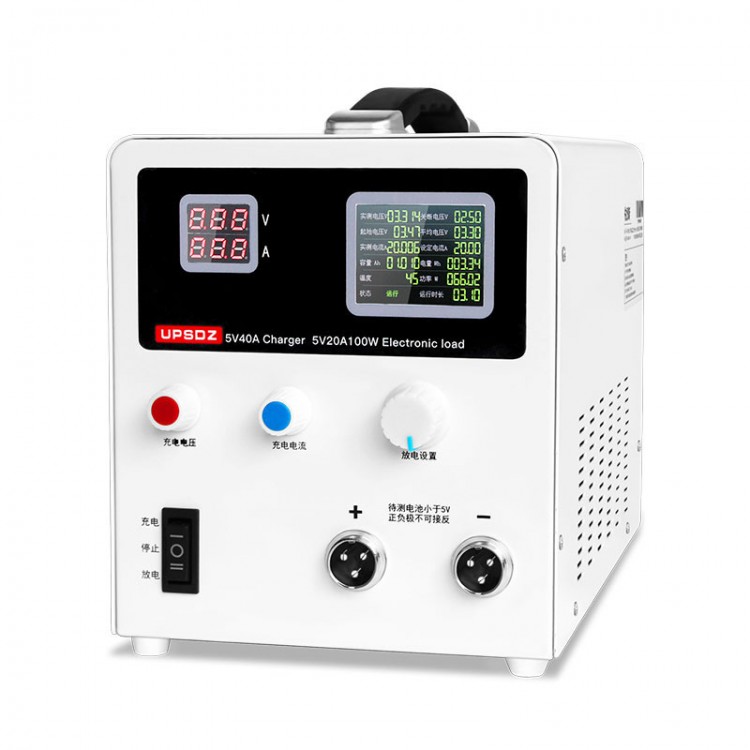
| Quantity | 3+ units | 10+ units | 30+ units | 50+ units | More |
|---|---|---|---|---|---|
| Price /Unit | $842.15 | $824.97 | $799.19 | $764.81 | Contact US |
 NF-919 Multifunctional Optical Fiber Tester 1310/1550nm Optical Power/Source Light/VFL 3-IN-1 Tester
$54.17
NF-919 Multifunctional Optical Fiber Tester 1310/1550nm Optical Power/Source Light/VFL 3-IN-1 Tester
$54.17
 NI-210SC Portable Dual Channel VI Curve Tester 18 Levels Frequencies Adjustable with 2.0-inch TFT Screen
$91.37
NI-210SC Portable Dual Channel VI Curve Tester 18 Levels Frequencies Adjustable with 2.0-inch TFT Screen
$91.37
 EU Edition LCD TV LED Backlight Light Strip Tester Wide Voltage Input and Output for Non-removable Screen Testing
$19.22
EU Edition LCD TV LED Backlight Light Strip Tester Wide Voltage Input and Output for Non-removable Screen Testing
$19.22
Lithium Battery Capacity Tester Aging Meter UPSDZ 5V 40A Charger 5V 20A 100W Electronic Load
Features:
- Cell capacity tester
- Suitable for ternary and iron lithium cells
- 40A charging current, 20A discharging high current
- With discharge curve display
Product Parameters:
Charging:
- Charging mode: constant voltage and constant current
- Charging voltage: three gears, 2.8V/3.65V/4.2V±1.5%
- Charging current: 1-40A self-setting
- Fully charged: Reach the set charging voltage and the current is zero
- Attention: The positive and negative poles cannot be reversely clamped because there is no reverse connection protection when charging
Discharging:
- Discharge power: <100W
- Discharge voltage: 0.9-5V
- Discharge current: 0.1-20A self-set
- Discharge mode: constant current discharge
- Discharge termination: 0.9-5V self-set
- Display parameters: measured voltage, cut-off voltage, starting voltage, average voltage, measured current, set current, capacity, power, temperature, power, status, running time, discharge curve
- Accuracy: 0.5%
- Heat dissipation: temperature controlled fan
- Equipment power supply: 220V or 110V
- Size and weight: 162 x 210 x 345mm (WxHxD). Net weight: 3.4kg
Attention:
Thank you very much for choosing our products. Before using, please read and understand the instructions carefully. This product is for professional use only. The incorrect operation of lithium battery is extremely dangerous, so please be sure to set the machine correctly according to the charging and discharging parameters provided by your lithium battery manufacturer, otherwise all the consequences will be borne by yourselves.
Package Included:
- 1 x Set of Battery Capacity Tester
Note:
- It is delivered with No. 4 clamps by default. If you need other clamps, please contact us. Thank you!
- Batteries are not included.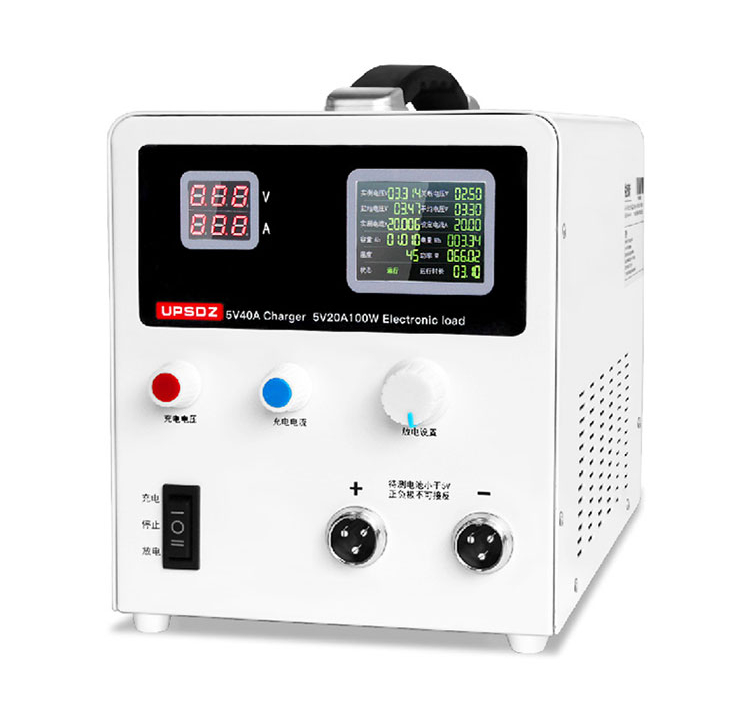
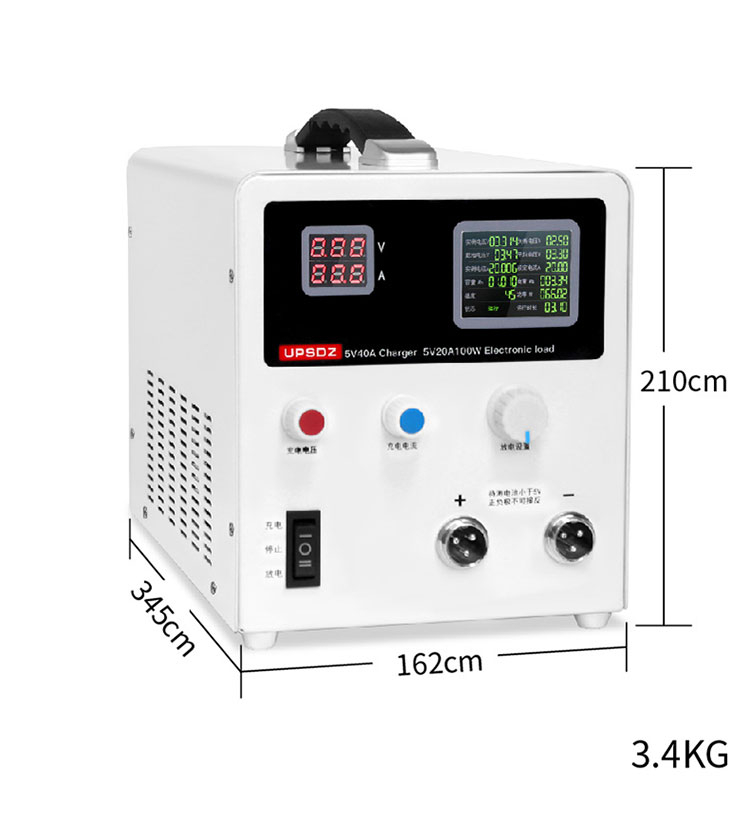
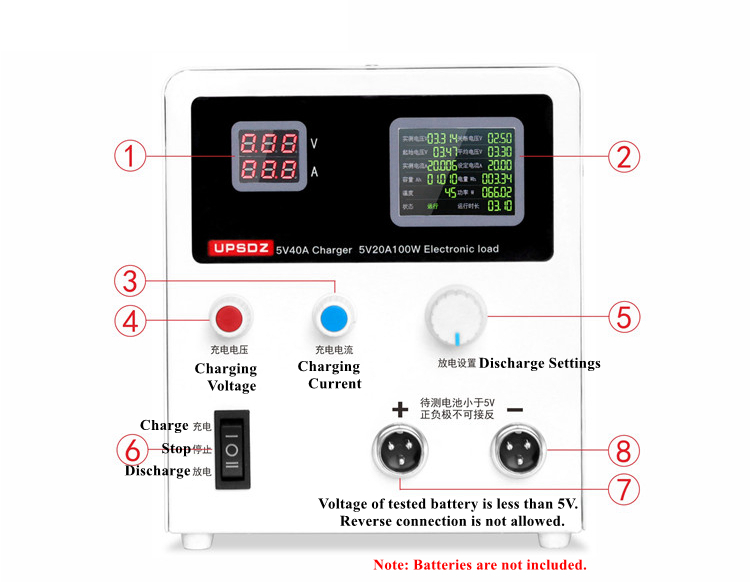
① Charging display: display charging voltage and current
② Discharge display: display discharge parameters and discharge curve
③ Charging current adjustment: 1-40A adjustable, the value becomes larger when the knob is turned clockwise
④ Charging voltage setting: 2.8-3.65-4.2V adjustable in three gears, the value becomes larger when the knob is turned clockwise
⑤ Discharge setting: Rotate the knob to adjust parameters, press down the knob to confirm or to pause
⑥ Charge/discharge selection switch
⑦ Battery positive connection (pin definition: pin 1 and pin 2 are connected in parallel for excessive current, pin 3 is the thin wire for voltage detection)
⑧ Battery negative connection (pin definition: pin 1 and pin 2 are connected in parallel for excessive current, pin 3 is the thin wire for voltage detection)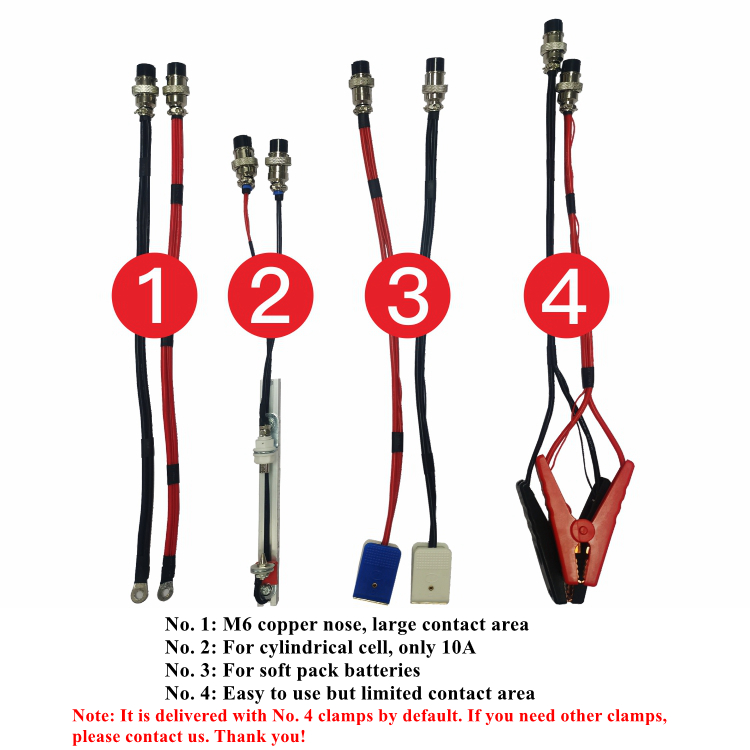
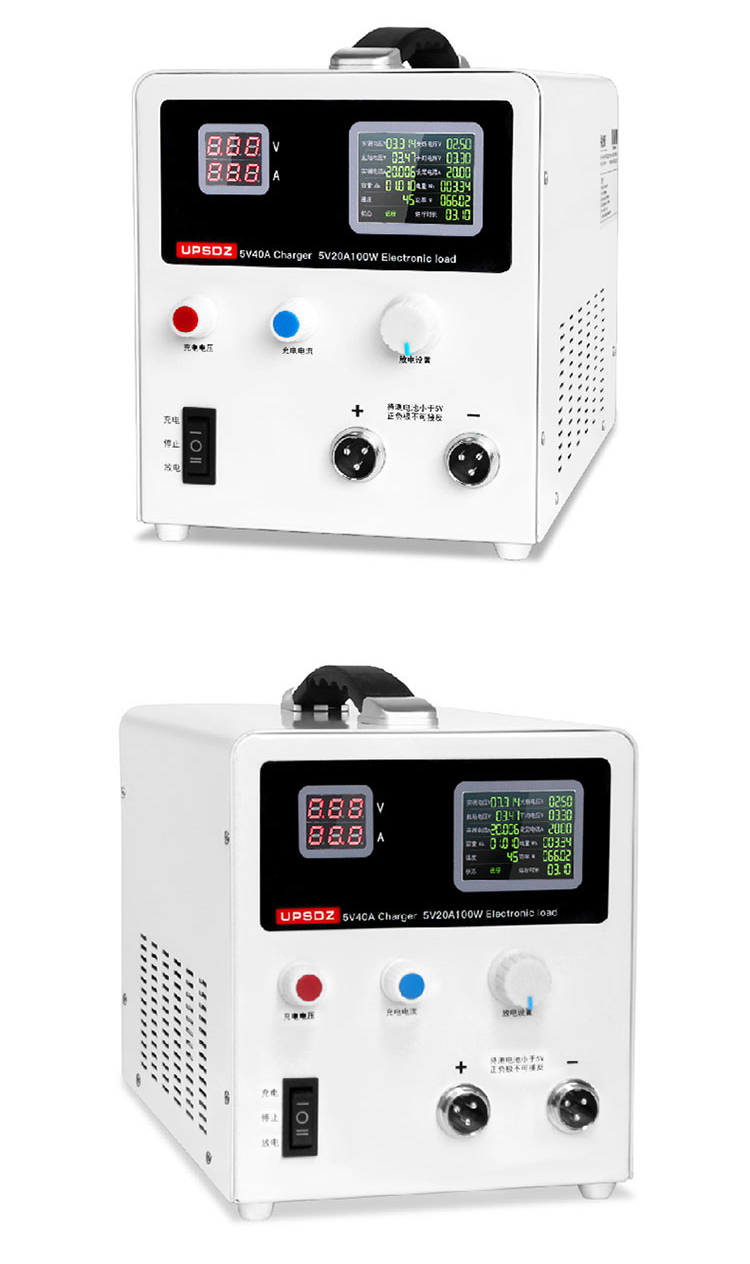
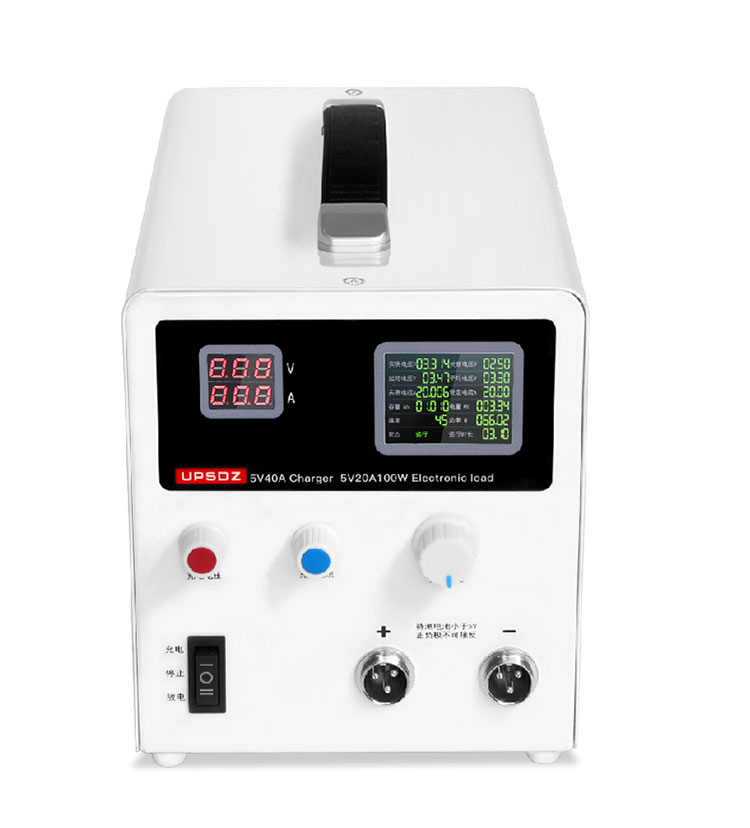
Using Method:
1. set the charging and discharging parameters of the machine correctly according to the charging and discharging parameters provided by your battery manufacturer
※ For batteries without clearly marked charging and discharging parameters, you can refer to the following judgment methods:
2. Set charge and discharge switch to the charge state, turn the charging current knob to the right until it displays voltage, and then adjust charging voltage knob to the correct position.
3. Connect a tested battery, and reverse connection is forbidden. The fixture should be in good contact.
4. Then adjust charging current. It is recommended to set it to 0.1-0.2 times of the battery capacity. For example: a 50AH battery, then the charging current is set to 5-10A. If the battery cell heats up, it means that the current is too large.
5. Wait for the charging current to be 0, and when the voltage reaches the charging cut-off voltage, charging is complete.
6. Let stand for 5-10 minutes and wait for discharge.
7. Set the charge and discharge switch to the discharge state.
8. Set the correct discharge cut-off voltage (cut-off voltage).
9. Set discharge current. It is recommended to set it to 0.2-0.5 times the battery capacity. For example, for a 20AH battery, then the discharge current is set to 4-10A. If the battery cell heats up, the current is too large.
10. During discharging process, you can turn the knob to switch between the discharge curve page and the main page.
11. Press the knob to suspend the discharge during discharge.
12. When the discharge is over, an alarm will be displayed and current discharge data will be displayed. Turn the knob to view the discharge curve.
13. Please not cut off the power or disconnect the battery during the discharging process, otherwise the current discharge data will not be saved.
14. When neither charging nor discharging, the battery must be removed, otherwise the battery will be scrapped.
Precautions:
- It is forbidden to perform charging and discharging tests on non-rechargeable or damaged batteries.
- It is forbidden to test batteries with a voltage exceeding 5V, and it is forbidden to connect the positive and negative poles in reverse, otherwise the charging module will be burned.
- Please set the charging/discharging voltage and current correctly, otherwise it will cause the battery to catch fire and explode.
- Please perform charging and discharging tests in an open environment, and there should be no high-temperature, flammable, explosive, and valuable items around.
- When charging and discharging the battery, please keep someone on duty.